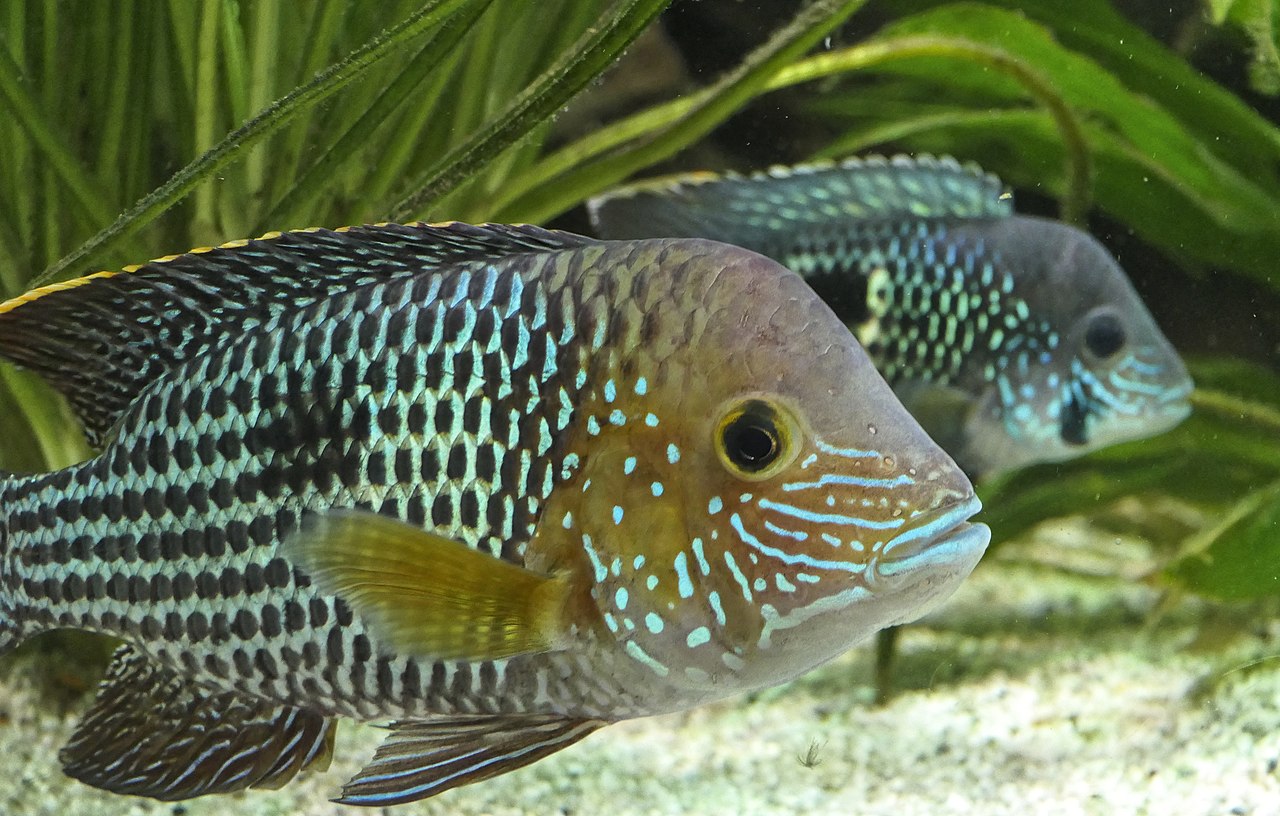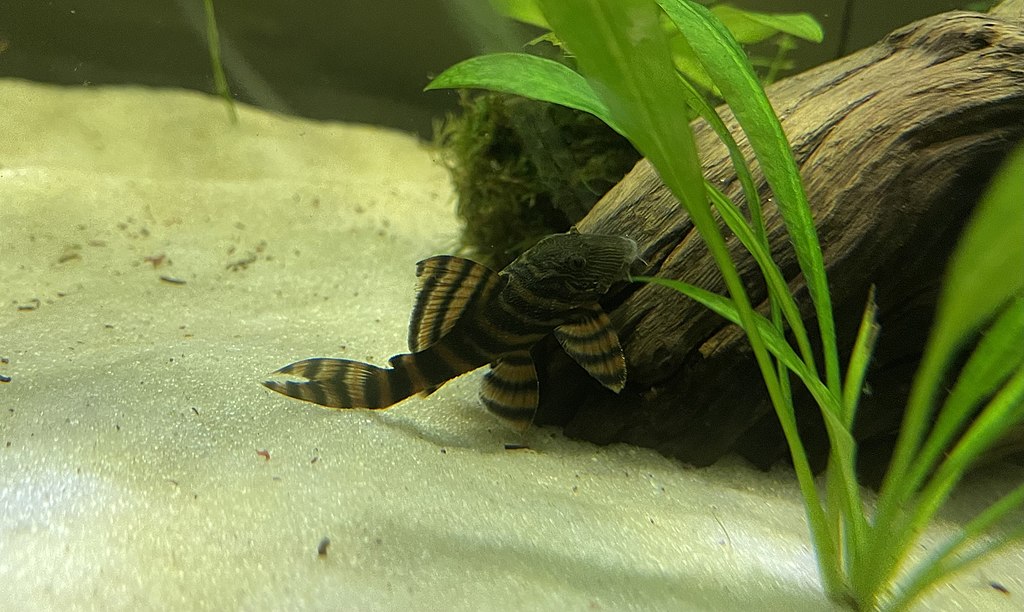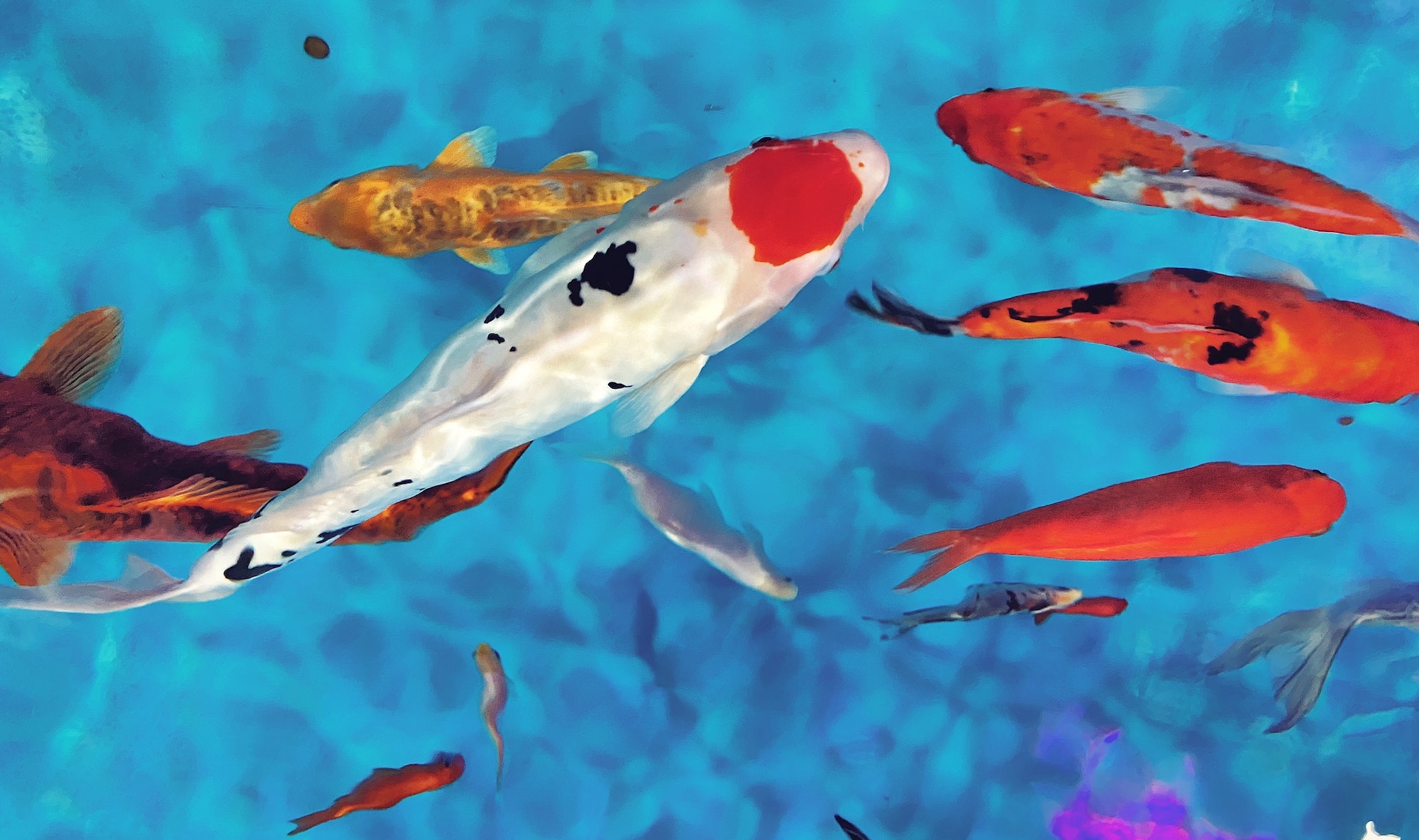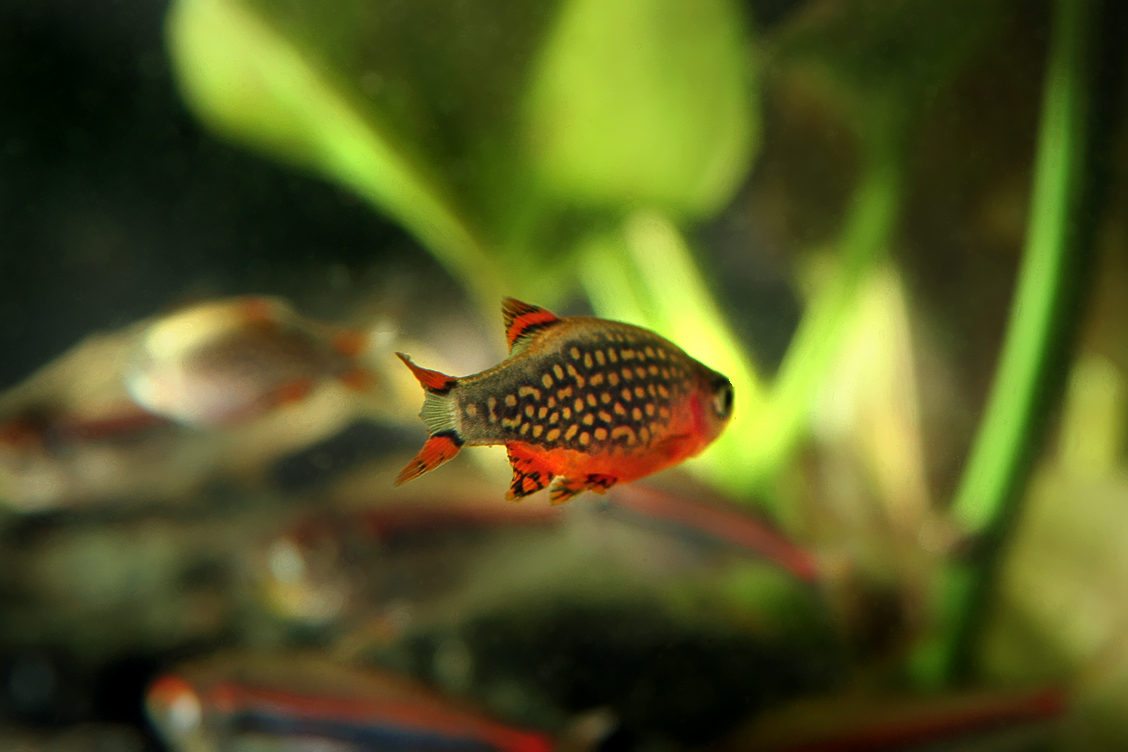The vibrant Green Terror, scientifically known as Andinoacara rivulatus, is a popular choice among fish enthusiasts. Part of the Cichlidae family, it shares a close bond with the likes of the Blue Acara and the Jack Dempsey. Its striking greenish hue, metallic at times, accompanied by blue facial patterns and reddish fin edges, makes it a visual delight.
Table of Contents
Contrary to what its name suggests, the Green Terror isn’t a rarity. It’s readily available for those keen on adding a touch of green to their aquatic world. Among its variants, the “Gold Saum” or “Orange Saum” Green Terror stands out with its pronounced orange or gold fin edges.
Native to the Pacific regions of South America, especially Ecuador and northern Peru, the Green Terror typically prefers the bottom to mid-sections of water bodies. As an omnivorous species, its diet comprises small fish, insects, and crustaceans, but it happily adapts to high-quality pellets and occasional veggies in captivity. While its territorial behavior and aggression, especially during breeding, can be a challenge, the right tank setup and care can curb these tendencies.
Here’s a quick snapshot: the Green Terror can reach up to 12 inches in the wild, but in captivity, it usually ranges between 6 and 8 inches. With the right care, its life can span from 7 to 10 years.
Did you know? Cichlids, which include our Green Terror, offer a staggering variety with thousands of species. Their rapid speciation over millions of years is nothing short of fascinating. And while the Green Terror’s name might sound daunting, many owners enjoy its playful and curious nature, often giving it quirky names!
Green Terrors have been a cherished part of the aquarium hobby for decades. Their mesmerizing appearance combined with their unique behavior patterns makes them a delightful addition to any aquarium.
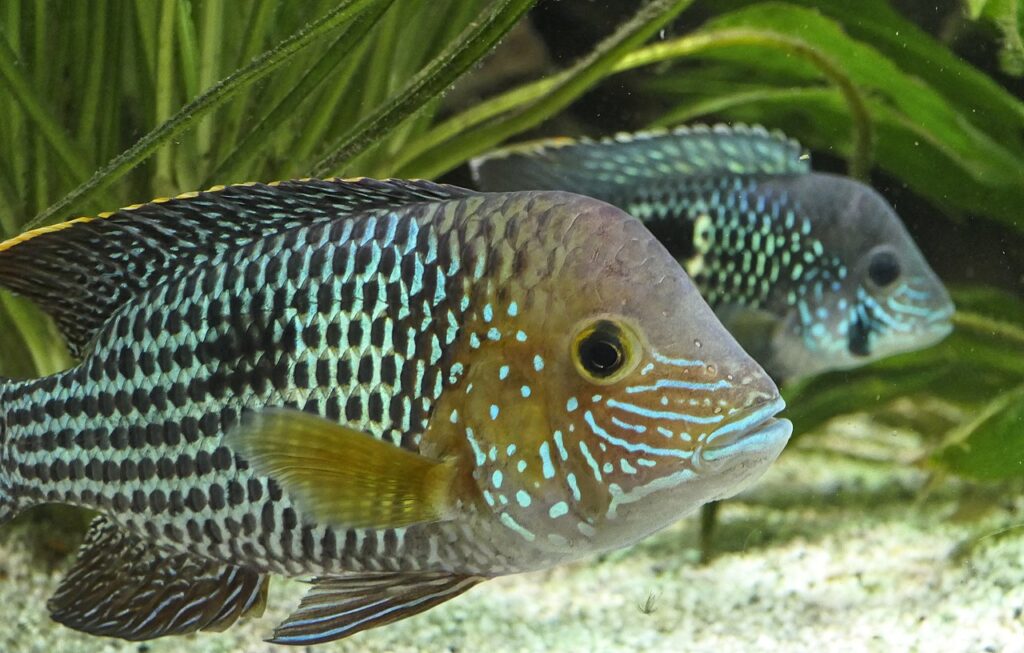
Key Information
| Family | Cichlidae |
| Price | Varies based on size, age, and location, typically $10-$30 |
| Common Names | Green Terror, Gold Saum Green Terror |
| Variants | Standard Green Terror, Gold Saum (or Orange Saum) Green Terror |
| Ideal Tank Size | 35-50 gallons for a single fish, larger for multiple |
| Water Parameters | pH: 6.5-8.0, Temperature: 20-24°C (68-75°F) |
| Lifespan | 7-10 years |
| Full Size | 6-8 inches (in captivity), up to 12 inches (wild) |
| Natural Environment | Pacific regions of South America (Ecuador and northern Peru) |
| Behavior | Territorial, can be aggressive, especially during breeding |
| Habitat Preference | Bottom to mid-sections of water bodies |
| Aquarium Decoration | Caves, rock formations, driftwood |
| Ideal Tank Mates | Larger tetras, barbs, larger catfish, other similar-sized fish |
| Fish to Avoid | Small fish, aggressive cichlids, fish of similar size/color |
| Best Foods/Diet | High-quality pellets, live/frozen shrimp, insects, occasional veggies |
| Disease | Prone to common fish diseases like Ich if not kept in optimal conditions |
| Sex-Switch | Rare; however, some cichlids exhibit sex-switching under specific conditions |
| Gender Differences | Males typically brighter with longer fin extensions; females might be duller and smaller |
| Care Level | Moderate; requires specific water parameters and tank setups |
| Breeding Level | Moderate; requires specific conditions and monitoring during breeding season |
Ideal Tank Mates
The Green Terror is a striking and captivating cichlid known for its vibrant colors and territorial behavior. When selecting fish to accompany the Green Terror in the tank, it is crucial to opt for species that can coexist harmoniously, avoiding becoming the victims of the Green Terror’s aggressive behavior. Ideally, tank mates should be of similar size or slightly larger, relatively peaceful, and hail from a compatible habitat. Here’s a closer look at ten ideal tank mates for the Green Terror:
- Larger Tetras
Species like the Congo Tetra or the Buenos Aires Tetra are large enough to not be considered prey by the Green Terror. Their active nature also helps them avoid any aggressive advances. - Barbs
Some larger barbs, like the Tinfoil Barb, can be good tank mates. They are swift swimmers, can hold their own, and their active swimming nature makes the tank a lively place. - Larger Catfish
Species like the Bristlenose Pleco or the Raphael Catfish not only help keep the tank clean but are also sturdy enough to fend for themselves against a Green Terror. - Rainbowfish
These fish are colorful, active, and can coexist with Green Terrors, given that they have enough space to swim around. Boesemani and Turquoise Rainbowfish are good examples. - Severum Cichlids
These peaceful South American cichlids are larger and can generally coexist with Green Terrors without too many confrontations. - Giant Danios
These active swimmers are too quick for the Green Terror to catch, making them an ideal choice. Their vibrant colors also add to the visual appeal of the tank. - Firemouth Cichlid
Though they have their own territorial tendencies, with enough space and hiding spots, Firemouth Cichlids can cohabit with Green Terrors. - Oscars
Oscars are larger cichlids that can easily coexist with Green Terrors. However, they require a significantly larger tank due to their size. - Silver Dollars
These are peaceful, schooling fish that add a shimmering touch to aquariums. Their size and speed usually keep them safe from Green Terrors. - Loaches: Loaches, especially the larger species like the Clown Loach, stay mostly at the bottom and can be great companions for Green Terrors.
While Green Terrors can be aggressive and territorial, with the right tank mates and a well-decorated tank, they can coexist peacefully with several other species. Always monitor the behavior of all fish when introducing new tank mates and ensure the aquarium is spacious enough to prevent territorial disputes.
FAQs
Can Green Terrors be kept with plants in the aquarium?
While Green Terrors can be kept in planted tanks, they have a tendency to dig, which might uproot plants. Opt for hardy plants or ones that can be anchored well. Floating plants can also be a good choice.
Do Green Terrors have a specific sleeping pattern?
Like many fish, Green Terrors don’t sleep in the same way humans do. They have periods of rest and reduced activity, usually during the night. It’s advisable to have a consistent light-dark cycle in the aquarium to support their natural rhythms.
How can I minimize aggressive behavior in Green Terrors?
Providing ample space, hiding spots, and ensuring that their environment doesn’t have too many reflective surfaces can help. Regularly rearranging the tank’s setup can also break established territories, reducing aggression. Additionally, choosing the right tank mates and monitoring interactions is crucial.
Is there a specific age when Green Terrors become more territorial?
While they can exhibit territorial behavior from a young age, it often intensifies during their breeding age, which starts around 8-12 months, and can be more pronounced as they mature.
Is it safe to hand-feed Green Terrors?
While some experienced aquarists might hand-feed their Green Terrors, it’s essential to exercise caution. Using long tweezers or feeding tools can be a safer way to avoid accidental nips.
How can I determine the age of my Green Terror?
While exact age determination can be tricky without knowing the fish’s history, size can be a general indicator. Younger fish are smaller with less pronounced colors, whereas mature ones will be closer to their full size and display vibrant colors. However, for a precise age, information from the breeder or seller is required.
Do Green Terrors undergo any color changes as they mature?
Yes, as Green Terrors mature, they undergo color shifts. Juveniles might have a silvery hue, which intensifies to vibrant greens, blues, and even reds as they age, especially in males.
Can Green Terrors be trained or recognize their owners?
Many aquarium hobbyists believe that Green Terrors, like many cichlids, can recognize their owners. Over time, they might associate their owner with feeding times and show more active behavior when the owner approaches.
Can Green Terrors jump out of the tank?
Like many fish, Green Terrors are capable of jumping, especially if startled or threatened. It’s advisable to have a secure lid or cover on the tank to prevent accidental escapes.

